As alluded to in the previous installments of this series, the primary objective of this trip was to embark upon a high-altitude, multi-day trek in the Peruvian Andes. We had organised this a few months in advance through KE Adventure; a Lake District-based adventure holiday company who come with a great track record of fairness towards their employees/affiliates, along with being known for providing varied and quality adventure holiday products.
From our starting point at Tinqui, our route was to circumnavigate the 6372 m Ausangate mountain of the Peruvian Cordillera Vilcanota mountain range. Along the route we would come to traverse high mountain passes, visit small, remote settlements and finally diverge from the typical Ausangate Circuit trail to take in some remote lagoons. Resulting from the latter extension, the trek was to last for nine days as opposed to the traditional five.
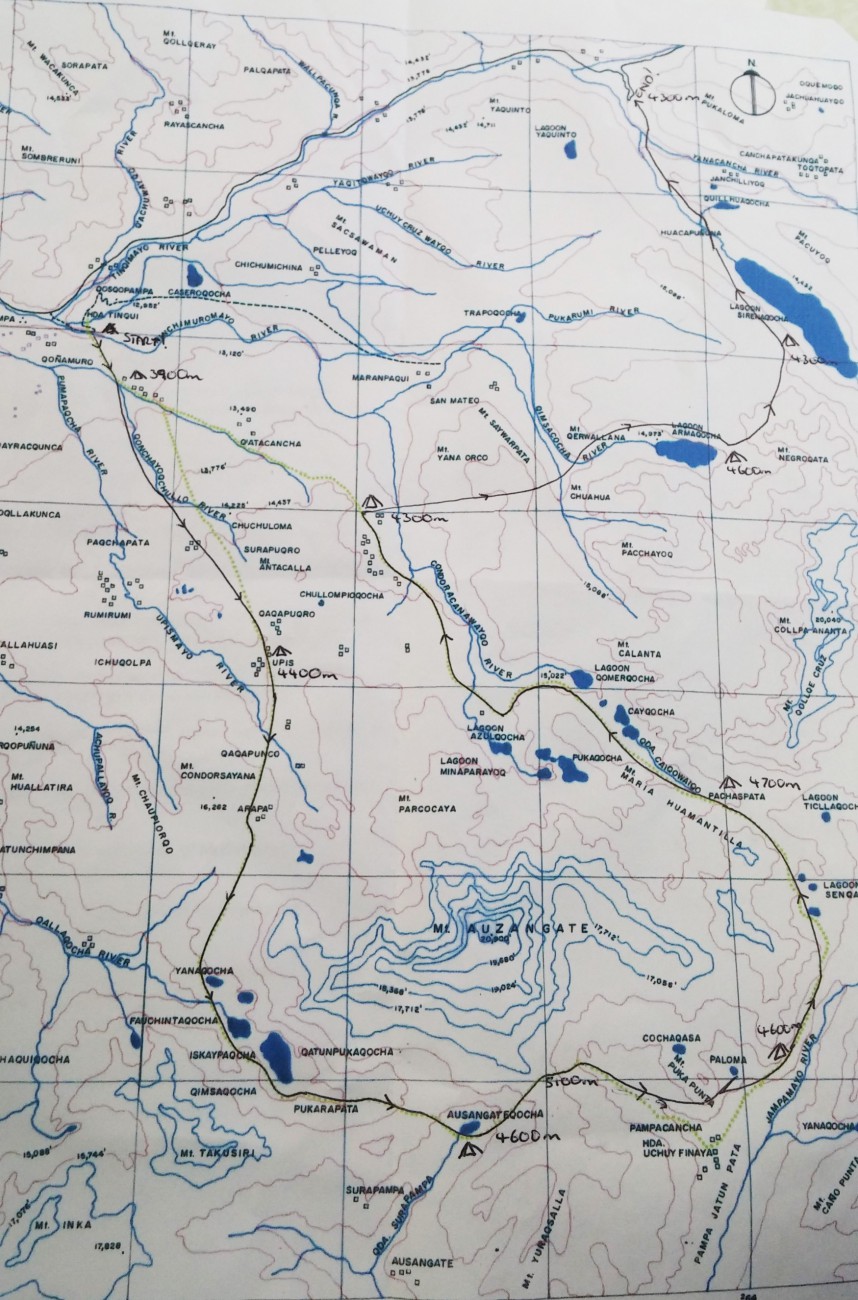
The route altitude ranged between ~3800 m from the first and lowest camp, to ca. 5200 m at the top of the highest pass, though typically we trekked between 4300-4600m. Day-to-day our route often oscillated in distance and altitude, ranging between 6 and 18 km with one day including the traverse of two ~5000m passes before attaining camp! The two highest daily elevation gains were ca. 500 m at their worst, but were typically ca. 200-300 m.
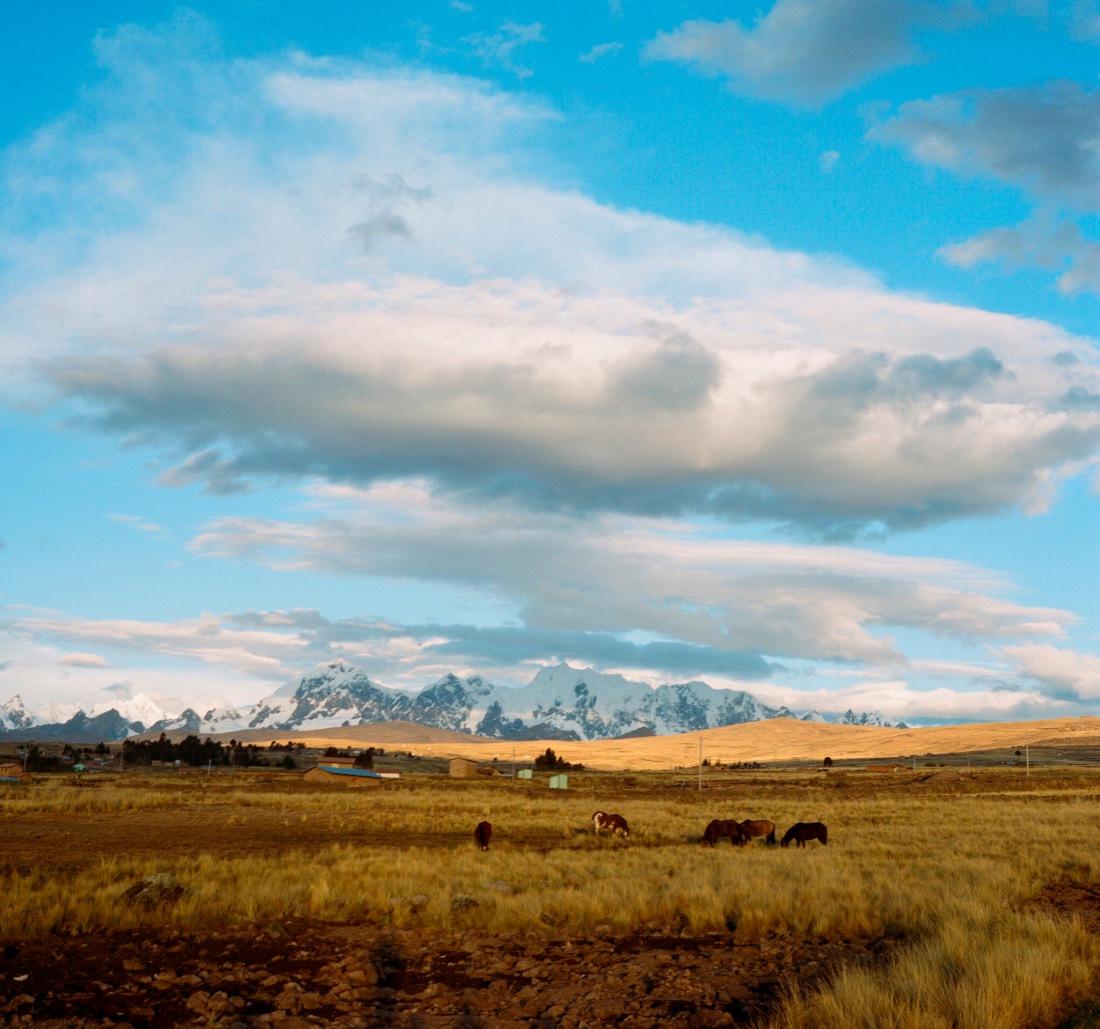


Whilst Sarah and I are well used to daily distances of up to 20 miles (~32 km), this was our first time at such altitudes and its effects upon our physical abilities well took their toll. We had taken Diamox (Acetazolomide) with us as a potential prophylactic precaution; however due to it’s reported side-effects, our relatively well-experienced guide and co-trekkers advised us against taking it, especially seeing as we had not started the course earlier.


Group wisdom suggested that altitude affects different people in different ways and never the same way twice. It is not known exactly why this may be so, but in this case and despite an extra 5 days of acclimatisation, for myself it manifested as chronic, migraine-like intense headaches and for Sarah, persistent nausea and sickness.
These effects were most potent during the first couple of days, slowly subsiding over the course of the trek. My headaches were found to be manageable by using alternating doses of Ibuprofen and Paracetamol in a prophylactic fashion each day. Sarah’s nausea was also attenuated through the use of anti-nausea pills though this didn’t always stem the sickness.
As I mentioned earlier, the first couple of days were the worst for these effects and they were certainly exacerbated by over-exertion. It became apparent that our zeal for the pastime, coupled with our inexperience at this altitude, co-conspired against us; meaning that we subconsciously pressed on too hard at times – walking ahead of the majority of the group thus compounding these altitudinal effects. We slowly grew used to this fact and ‘reigned it in’ for subsequent days.
The first few days were the longest, hardest and with the most elevation gain. We approached Ausangate from the north-west, heading around it’s southern aspect before ‘doubling-back’ towards the hot springs at Pachanta. Prior to this point there were four camps, three high passes (Arapa – 4850 m, Apuchata – 4900 m, Palomani – 5200 m), and also several small lagoons.

Alpacas were virtually omnipresent along our route, keeping us in comical company as we followed the dirt roads to begin with. At some point before reaching Pachanta we even caught sight of some Vicuña grazing and popping their heads up intermittently over a ridgeline. The roads eventually petered out, turning into dirt tracks, then rock-strewn rough trails and finally barren plateaus at the highest altitudes.
To begin with, our support party followed by road whilst they could, carrying our food, equipment and shelters. We only carried our essential daily items – water, insulation etc… Though once the roads had disappeared, the horses were broken out. They would pack up and follow on behind us until a mid-way point – where they overtook and went on to set up the next camp.
We passed the snowline twice, from these altitudes the alpacas and Vicuña were absent, and on one occasion, when I felt like I had some residual energy, I decided to have some extra fun – kicking steps so as to ascend a snowy raise until attaining a small viewpoint above the rest of the group. This was probably one of those examples of unnecessary over-exertion; but who cares, it was fun and probably my most memorable moment of the trek itself!
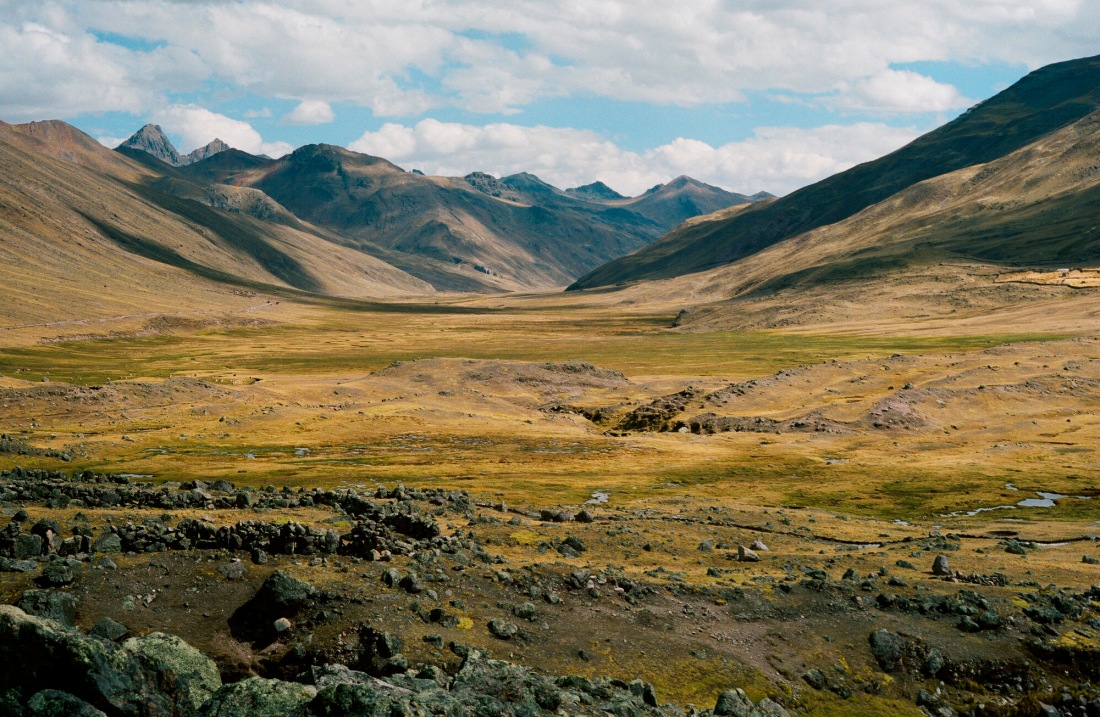

Sleeping arrangement was by tent – semi-geodesic Go-Lite knock-offs. Despite not being authentic Go-Lite equipment, the design and feature-set were functional and decent. Sarah and I shared, whilst the others distributed themselves. After each day’s trekking we were welcomed by a fully set up camp and were brought a bowl of hot water each for washing, which was usually followed by some free time before dinner. The washing bowl was always a great moment, and I most certainly enjoyed soaking my feet at the end of a hard day!
Whilst Sarah and I are well used to tent life, after nine days the imposed routine did start to become a little tedious. Though I think this might have been different had we have been solo’ing.
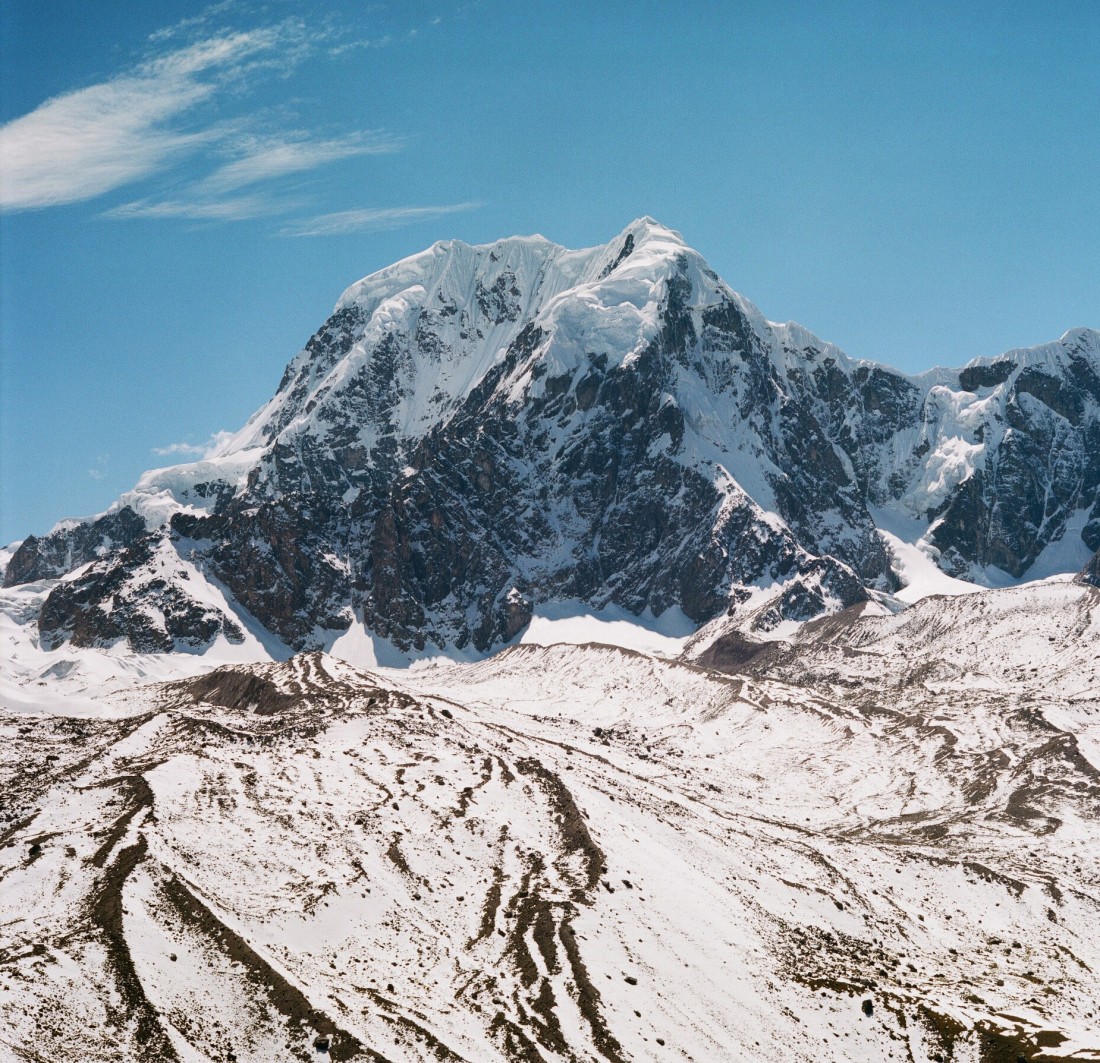

The process was well organised and executed and the standard of food was pretty high for the most part. Though obviously once we’d ventured far enough away from civilisation, there was no chance for a re-supply and perishables can do naught but succumb to their inherent nature in these situations. Thus the ability to maintain a consistent standard inevitably declined, but nevertheless we were well-kept enough.

Pachanta was one of those eventual re-supply points and its hot pools were really quite lovely, though not all had been recently cleaned. There were three different pools of varying temperatures, none too hot to endure. Upon arrival we experienced our first proper, albeit short, snowstorm that we watched come in from the other side of the Ausangate massif, but this cleared after a couple of hours or so. We had another brief flurry a few days before, but nothing significant, it appeared that we had just missed out on some serious snow a couple of days before. The next morning we said our goodbyes to the, up until then, ever-present Ausangate, as we walked further north-eastwards towards the Singrenacocha lagoon.
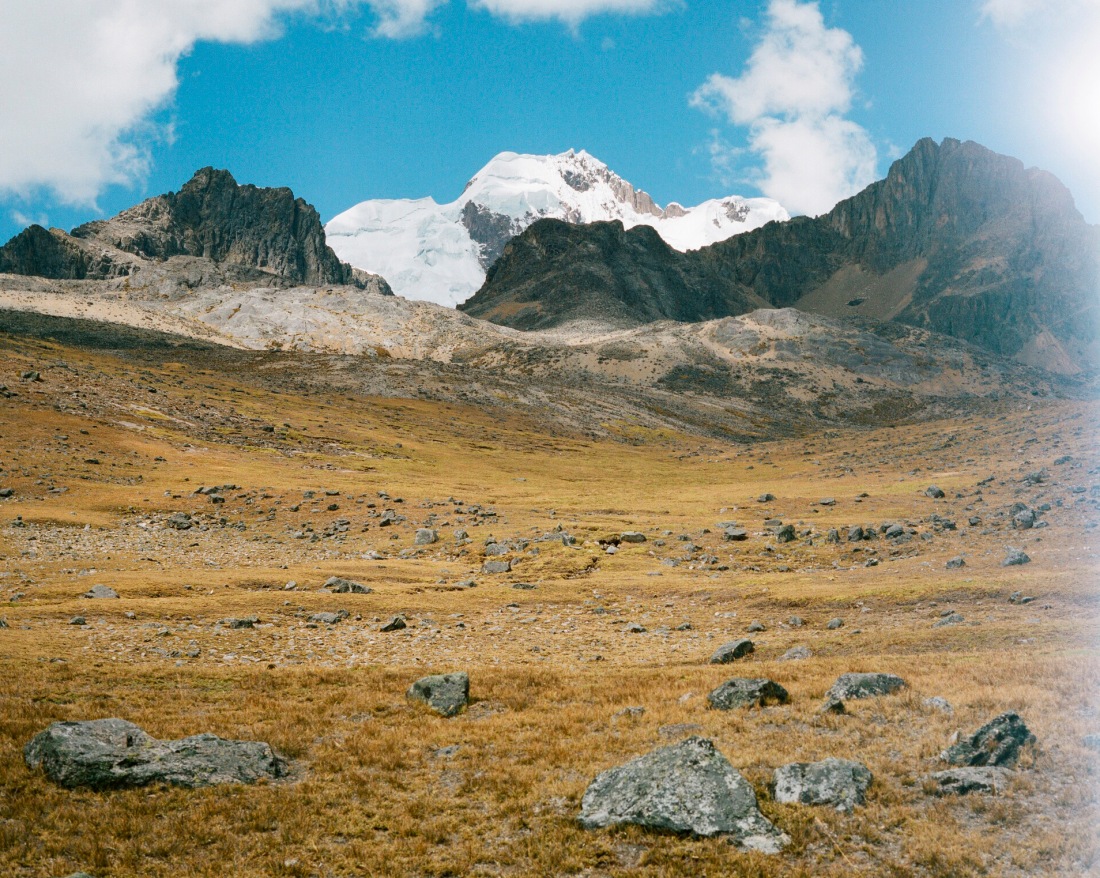
Now and again, one might come across an image of a far-away place of such stark contrast to the often drab urbanity that we inhabit. Some that I have seen are so wildly different that, in the face of modern image processing techniques, one has to be skeptical as to their authenticity. Our next stop was, and my next image is, one of these such places.

Now, we’d already seen some lovely lagoons on the route but nothing could prepare us for the textured and abstract beauty of the magnificently azure Singrenacocha and its surroundings. We stayed for some time on that ridgeline, admiring and trying capture the sight before us.
The descent down to the waters edge seemed to take forever, it very much had a significant gradient. Unfortunately, it turned out that the view from afar far superceded that which we found at the bottom.
Firstly, the intense blue colouration appeared to correlate with the lagoons depth, so was absent for a viewer closer to the edge. Furthermore, it was evident that a/some previous party(ies) had left a great deal of waste, both in the water and further along the shore at another makeshift campsite. Basic rules apply – pack out what you take in – it’s bloody simple. I can’t believe people would want to ruin such an amazing place.

Anyhow, this was our final camp on the trek, the next morning we packed out and left mid-morning, it was also one of the shortest days. We walked, tired, out towards the main road, where we would gladly meet our bus and head back to Cusco.

The next day on our KE itinerary was reserved for a day-trip to Machu Picchu, I will talk a little more about this next in ‘A Pan-American Adventure; Part 2.3’.












lovely shots!
LikeLike
Thanks!
LikeLike